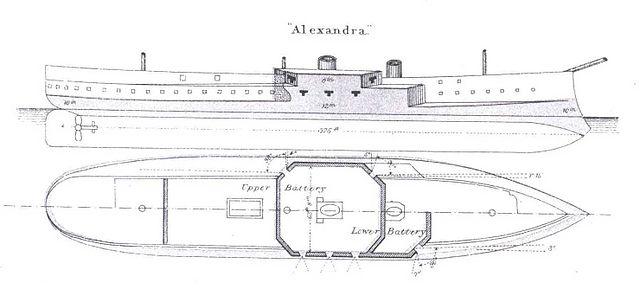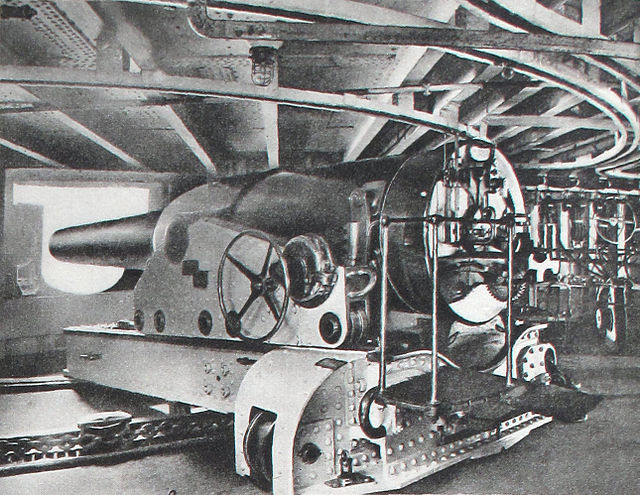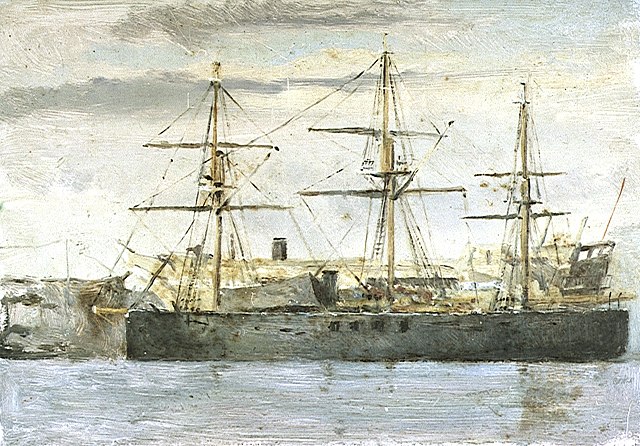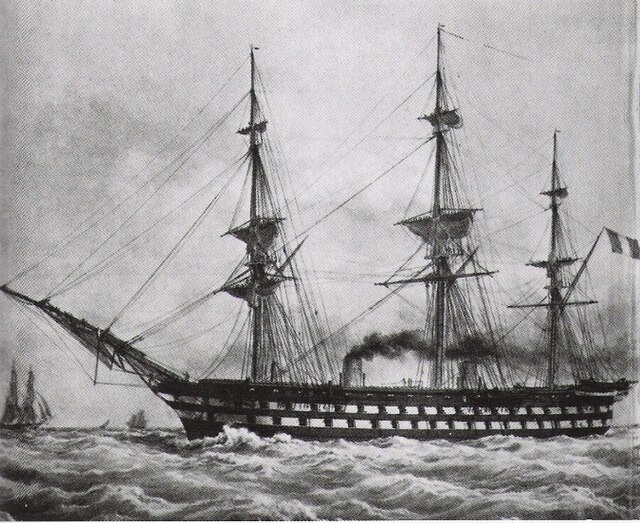The central battery ship, also known as a centre battery ship in the United Kingdom and as a casemate ship in European continental navies, was a development of the (high-freeboard) broadside ironclad of the 1860s, given a substantial boost due to the inspiration gained from the Battle of Hampton Roads, the first battle between ironclads fought in 1862 during the American Civil War. One of the participants was the Confederate casemate ironclad CSS Virginia, essentially a central battery ship herself, albeit a low-freeboard one. The central battery ships had their main guns concentrated in the middle of the ship in an armoured citadel. The concentration of armament amidships meant the ship could be shorter and handier than a broadside type like previous warships. In this manner the design could maximize the thickness of armour in a limited area while still carrying a significant broadside. These ships meant the end of the armoured frigates with their full-length gun decks.

Plan of HMS Alexandra
24 cm gun model 1884 in an ironclad
Central battery ironclad of the Royal Navy at anchor, ca.1860
An ironclad was a steam-propelled warship protected by steel or iron armor constructed from 1859 to the early 1890s. The ironclad was developed as a result of the vulnerability of wooden warships to explosive or incendiary shells. The first ironclad battleship, Gloire, was launched by the French Navy in November 1859, narrowly preempting the British Royal Navy. However, Britain built the first completely iron-hulled warships.
The first battle between ironclads: CSS Virginia (left) vs. USS Monitor, in the March 1862 Battle of Hampton Roads
Napoléon (1850), the first steam battleship
A Paixhans naval shell gun. 1860 engraving
French Navy ironclad floating battery Lave, 1854. This ironclad, together with the similar Tonnante and Dévastation, vanquished Russian land batteries at the Battle of Kinburn (1855).







